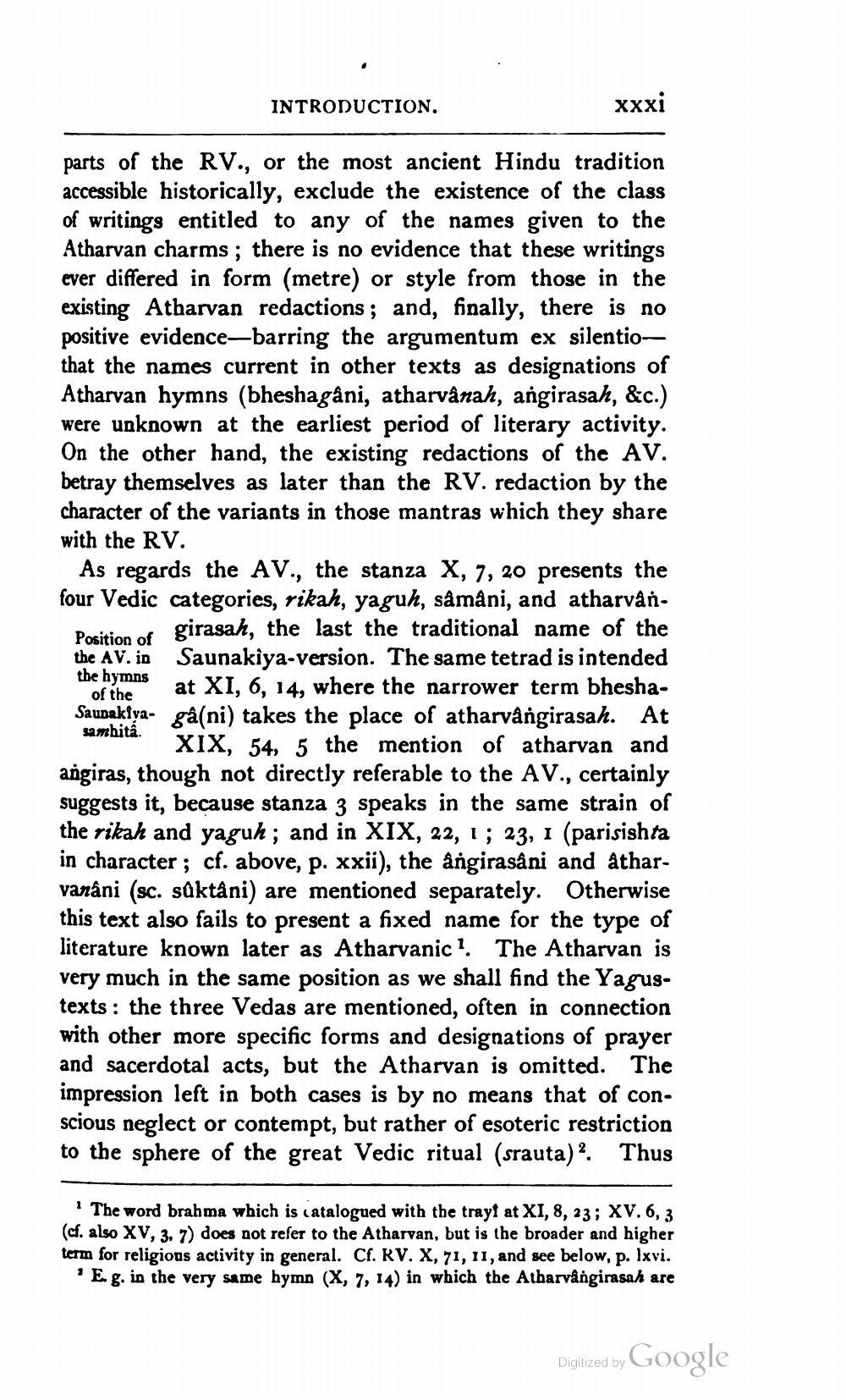________________
INTRODUCTION.
xxxi
parts of the RV., or the most ancient Hindu tradition accessible historically, exclude the existence of the class of writings entitled to any of the names given to the Atharvan charms; there is no evidence that these writings ever differed in form (metre) or style from those in the existing Atharvan redactions; and, finally, there is no positive evidence-barring the argumentum ex silentiothat the names current in other texts as designations of Atharvan hymns (bheshagâni, atharvânah, angirasah, &c.) were unknown at the earliest period of literary activity. On the other hand, the existing redactions of the AV. betray themselves as later than the RV. redaction by the character of the variants in those mantras which they share with the RV.
Position of
the AV. in
the hymns
of the
samhita.
As regards the AV., the stanza X, 7, 20 presents the four Vedic categories, rikah, yaguh, sâmâni, and atharvângirasah, the last the traditional name of the Saunakiya-version. The same tetrad is intended at XI, 6, 14, where the narrower term bheshaSaunakiya- gâ(ni) takes the place of atharvângirasah. At XIX, 54, 5 the mention of atharvan and angiras, though not directly referable to the AV., certainly suggests it, because stanza 3 speaks in the same strain of the rikah and yaguh; and in XIX, 22, 1; 23, 1 (parisishta in character; cf. above, p. xxii), the ângirasâni and âtharvarâni (sc. sûktâni) are mentioned separately. Otherwise this text also fails to present a fixed name for the type of literature known later as Atharvanic1. The Atharvan is very much in the same position as we shall find the Yagustexts: the three Vedas are mentioned, often in connection with other more specific forms and designations of prayer and sacerdotal acts, but the Atharvan is omitted. The impression left in both cases is by no means that of conscious neglect or contempt, but rather of esoteric restriction to the sphere of the great Vedic ritual (srauta) 2.
Thus
The word brahma which is catalogued with the trayf at XI, 8, 23; XV. 6, 3 (cf. also XV, 3. 7) does not refer to the Atharvan, but is the broader and higher term for religious activity in general. Cf. RV. X, 71, 11, and see below, p. lxvi. 'E. g. in the very same hymn (X, 7, 14) in which the Atharvângirasah are
Digitized by
Google




